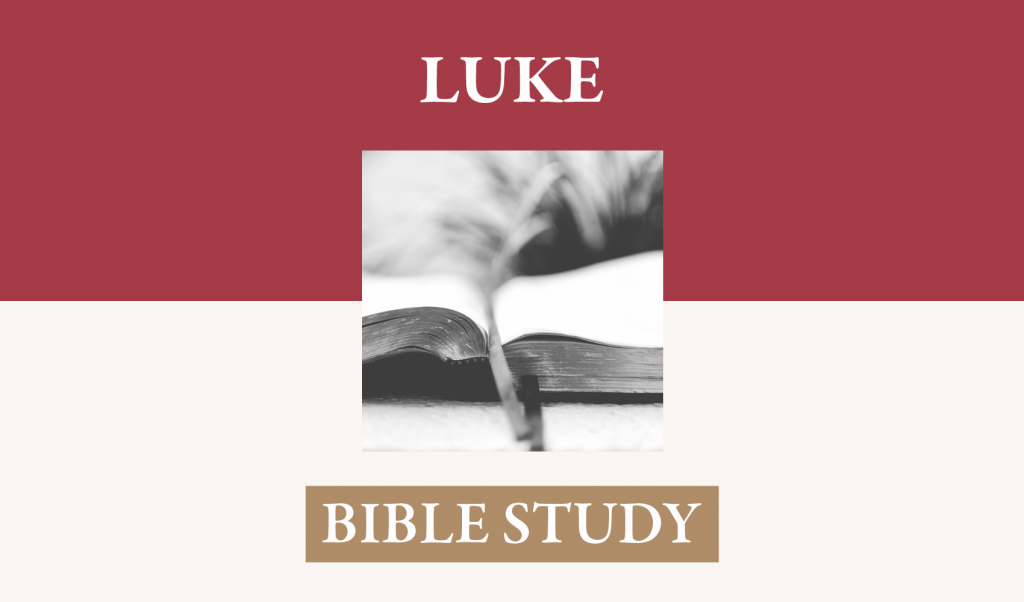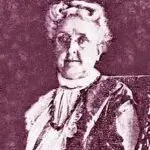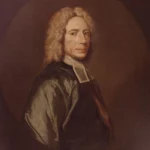Lesson Focus: Jesus alone has the authority to forgive sin, and He desires that all people experience His forgiveness and grace.
Jesus Honors Faith: Luke 5:17-20.
[17] On one of those days, as he was teaching, Pharisees and teachers of the law were sitting there, who had come from every village of Galilee and Judea and from Jerusalem. And the power of the Lord was with him to heal. [18] And behold, some men were bringing on a bed a man who was paralyzed, and they were seeking to bring him in and lay him before Jesus, [19] but finding no way to bring him in, because of the crowd, they went up on the roof and let him down with his bed through the tiles into the midst before Jesus. [20] And when he saw their faith, he said, "Man, your sins are forgiven you." [ESV]
[17] Verse 17 shows that people came from Galilee, Judea, and Jerusalem to hear Jesus. As was His custom, Jesus teaches with others seated about Him. The Pharisees and teachers of the law come from the entire region, even from as far as Jerusalem. The officials of organized Judaism are starting to take an interest in Jesus. The Pharisees were one of four major religious groups in first-century Judaism – Sadducees, Essenes, and Zealots being the others. The Pharisees were a nonpriestly or lay separatist movement whose goal was to keep the nation faithful to Mosaic faith. In order to do this, they had a very developed tradition that gave rulings on how the law applied to a variety of possible situations not addressed directly by Scripture. The teachers of the law were religious lawyers who supported the development of this extrabiblical tradition. Their motive was to preserve and contextualize the biblical teaching into new settings. Usually called scribes, they are often linked with the Pharisees or the chief priests. They could rule on the religious legality of an issue from a pharisaic point of view, although, as the Mishnah attests, the opinions on any given issue were hardly unanimous. These legal assistants helped in recording the tradition for future generations. They functioned like religious parliamentarians for the sect and were Pharisees themselves. The Pharisees were a strict movement that had little popular appeal, but they held much influence in key places. After mentioning the future opponents, Luke adds another unique note: the power of the Lord was with him to heal. What Jesus is about to do is in conjunction with God’s power working through Him. It may be one teacher versus several religious authorities, but God is working through the teacher, who is also a healer. Jesus is teaching. The Pharisees are present. Jesus is ready to heal and make great claims in the process.
[18-19] As the crowd congregated, some men brought a paralyzed man on his bed toward Jesus, but getting access to the Teacher proved difficult. The normal entry into the house was blocked by the crowd. However, that would not stop this group of men. The typical house in Palestine had two stories, with the roof area serving as the second story. Steps up to the roof often lay in the open. The roof was usually somewhat flat and about six feet above the ground. Wooden beams were laid across the top of the stone or mud walls, with a layer of reeds, thorns, and several inches of clay on top of them. Such a roof was the answer for the blocked path to Jesus. The men go up on the roof, make a hole, and begin carefully to lower the man through the tiles, which probably describes removing lumps of clay. This man’s friends went to great lengths to get him before Jesus. Not only did they clear the roof, they also had to rig a way to lower him. The reference to before Jesus is very dramatic, trailing at the end of the verse. Now the man sits right before Jesus. The detail of the account leads the reader to identify with various figures in the story. What would Jesus do? How would the paralytic and his friends feel? What is the crowd thinking?
[20] Jesus responds with more than healing. Jesus sees the faith of the friends and addresses the paralytic. Faith is often mentioned by Luke, and this is its first mention in the Gospel. Faith in this context emerges clearly as the belief that Jesus can provide graciously to meet the paralytic’s need. God’s help can be found through Him. Jesus has God’s power to heal. Just how much healing authority Jesus possesses they are about to discover. He has more than they bargained for. Man is not derogatory as it is in American English, but it is like saying “friend.” The man’s sins are forgiven, a key term in Luke. The passive voice (are forgiven) indicates that God does the healing and forgiving, while the perfect tense emphasizes the state of forgiveness into which the paralytic enters through Jesus’ declaration. Just as the man was healed from this point forward, so he was also forgiven from this point forward. The significance of this statement is not lost on the professional theologians in the audience. Jesus is showing that His miraculous work carries a message about spiritual realities. It is not clear whether specific sin is in view in the healing or whether Jesus indicates that disease is a reflection of a fallen created order. What is clear is that Jesus claims to have the power and authority to reverse the unfortunate situation. The theme of forgiveness of sin or of accepting the spiritually needy is frequent in Luke and the emphasis is on who provides it, namely Jesus or God. The claim to forgive means that Jesus’ ministry has taken on a greater significance. Jesus begins gradually to reveal what His ministry is all about.
Jesus Forgives Sin: Luke 5:21-26.
[21] And the scribes and the Pharisees began to question, saying, "Who is this who speaks blasphemies? Who can forgive sins but God alone?" [22] When Jesus perceived their thoughts, he answered them, "Why do you question in your hearts? [23] Which is easier, to say, ‘Your sins are forgiven you,’ or to say, ‘Rise and walk’? [24] But that you may know that the Son of Man has authority on earth to forgive sins"–he said to the man who was paralyzed–"I say to you, rise, pick up your bed and go home." [25] And immediately he rose up before them and picked up what he had been lying on and went home, glorifying God. [26] And amazement seized them all, and they glorified God and were filled with awe, saying, "We have seen extraordinary things today." [ESV]
[21] Luke here refers to scribes, a different term from that used in 5:17 for this same group of people. In the Old Testament, scribes served as legal counselors. Their legal, scriptural training causes them to react to Jesus’ statement theologically, correctly understanding Jesus’ claim to be significant. But they reject the claim, the first of many such rejections. Blasphemy is a serious charge, one that will eventually become the basis of Jesus’ conviction. It involves an overt defilement of the divine name, that is, abusive speech or action directed against God. Conviction was punishable by death, which involved stoning in the Old Testament. What exactly constituted blasphemy in the first century is uncertain. Some rabbinic materials that define blasphemy are slightly later than the New Testament period and have a narrow definition of the term, one not followed by other later rabbinic sources. The Mishnah’s narrow definition requires that the divine name be used, while other materials suggest three possible ways to blaspheme: (1) speaking ill of the Torah, (2) engaging in idolatry, or (3) bringing shame on Yahweh’s name. The point in all of these possible ways to blaspheme is that God’s majesty is somehow violated. Such a violation is what the leadership claims is present, as the next question shows. They see Jesus claiming a divine prerogative and therefore violating God’s majesty by taking to Himself something reserved for God. Forgiving sin is God’s work only. What probably causes the reaction is the directness of Jesus’ claim, coupled with His lack of any official tradition or training. Jesus introduces a theological tension into His ministry. Those who observe Him must wrestle with who He is. He also fulfills the commission laid out in 4:18. Jesus’ claim to perform God’s role and have authority over God’s prerogatives forces Jesus’ audience to a decision. A healing would be seen as an act of forgiveness by God, but it is another thing to claim to give that forgiveness directly.
[22-26] Jesus is not unaware of the religious leaders’ thinking. Jesus decides to challenge the Pharisees directly, having realized what they are thinking. He simply begins by asking why they should question Him. Jesus issues the challenge in language that is virtually the same in all three Gospels. The question that Jesus raises is asked from the observer’s perspective. The logic of the question is easy to follow: it is easier to say something that cannot be visually verified than to say something that can be visually substantiated. The easier claim from the observer’s point of view is the claim to forgive sins, since one cannot prove it wrong. The issue is this: Is Jesus’ claim an empty word or the real thing? Does Jesus’ declaration of forgiveness have God’s word and power behind it? In this way, Jesus links the healing tightly with the spiritual message He bears in His person. One will reveal the truth of the other, as He is about to show. Such a challenge shows that the miraculous character of Jesus’ ministry was not a peripheral matter that could be easily discarded from the early church’s portrait of Jesus. These works had a crucial function against the objector in substantiating Jesus’ claims. The miracles also served as pictures of deeper spiritual realities. Material and spiritual realities could be compared to one another. Miracles put rejection into the “without excuse” category, since miracles provided divine attestation. Jesus places the miracle in the context of His own authority. This is Luke’s first use of the title Son of Man. Luke uses the title twenty-five times. This title is Jesus’ favorite way to refer to Himself. Jesus eventually will reveal that the designation comes from Daniel 7:13-14, where the Son of Man is simply a human figure in contrast to the four beasts. Yet his authority, derived from the Ancient of Days, is extensive, since this figure rides on the clouds and brings vindication to the saints. All of this background emerges explicitly through Jesus’ later use and development of the phrase. In Luke 5, Jesus simply introduces the term. By His actions Jesus reveals Himself as the Son of Man and indicates the extent of the authority He possesses. If the paralytic walks, the miracle talks about the Son of Man’s authority to forgive sin. If the Son of Man possesses such unique authority, then who is the Son of Man other than God’s unique agent of salvation? That is the question that the miracle raises. Jesus turns to the paralytic and gives him three commands: get up, take the mat, and go home. The man’s being able to walk home attests to his healing, and it should cause the observer and the reader to reflect on what this healing says about Jesus and what Jesus’ claim to have authority over sin really means. If God is the source of healing, what does this healing mean? Moreover, since God does not work through impostors or liars, what does this healing mean? The miracle’s success narrows the options. It leaves the audience both of the event and of Luke’s Gospel to ponder the appropriate conclusion. The healing is narrated in a rather simple form. Each of the three commands given in 5:24 is paralleled with a fulfillment in 5:25: the paralytic got up, took up his mat, and went to his home, glorifying God. Luke concludes the account with the crowd’s response: amazement gripped them. The crowd gave God praise, a common Lucan note. The audience was filled with awe, a reaction that Luke’s readers should have as well. The crowd knew it was dealing with God’s surprising presence. The positive implication in this remark means that people other than the leadership saw the event and took note. They may not have understood everything, but they could see that something was happening.
Jesus Seeks Sinners: Luke 5:29-32.
[29] And Levi made him a great feast in his house, and there was a large company of tax collectors and others reclining at table with them. [30] And the Pharisees and their scribes grumbled at his disciples, saying, "Why do you eat and drink with tax collectors and sinners?" [31] And Jesus answered them, "Those who are well have no need of a physician, but those who are sick. [32] I have not come to call the righteous but sinners to repentance." [ESV]
[29-30] Levi holds a feast with Jesus as the honored guest. Levi takes his call seriously and opens up his home to his friends to introduce them to Jesus. Levi seeks to use his home and resources to bring the message of Jesus to his friends. The issue is not the party, but who is invited to it. Luke speaks of a large company of tax collectors and others, identified as sinners by the Pharisees. Luke lets the Pharisees make the full charge against Jesus and His disciples. Levi has gone to great trouble to bring Jesus to many who might not normally be expected to have contact with a religious dignitary. The turnout is clearly not the moral upper crust of society. Nevertheless, Jesus reclines with them in meal fellowship. In doing so, He is carrying out His ministry to the spiritually needy. At the same time, Jesus offends the separatism of the Pharisees, who would have never shared a meal with such rabble. The official response to the meal occurs some time after the event when the Pharisees and their scribes approach the disciples with a question. That this encounter comes after the party is clear, because the Pharisees would not have come to such a party, as their question shows, even in the unlikely event that they had been invited. The leaders wish to register a complaint. The verb, grumbled, is a graphic, emotive verb. Luke reserves this word group for complaints about Jesus’ relationship to outsiders. It was also used in the Old Testament to describe Israel’s complaining against God in the desert, so that often the term describes inappropriate grumbling. The complaint attacks Jesus indirectly by aiming at the disciples. The problem in their view is not mere contact with sinners, but table fellowship that seeks out and welcomes these people. The judgment by the Pharisees is not necessarily harsh. It may accurately describe these people, but for Jesus, recovery is the issue, not quarantine. The Pharisees regard the disciples and Jesus’ association with such people as inappropriate for any religious leader. Jesus extends an acceptance that the Pharisees reject, especially since Jesus is taking the initiative. In the Pharisees’ judgment, He reclines with those to whom He should respectfully decline fellowship. But Jesus aggressively formed relationships that would help lay the basis of an acceptance from which the challenge about lifestyle could be made. Thus, the issue is the scope of Jesus’ mission and the focus of the disciples’ concern, not table fellowship in the church. Disciples should seek the lost and relate to them in a way that allows the offer of God’s grace to be extended to them.
[31-32] Jesus’ reply adopts the Pharisees’ perspective, and there is a note of sarcasm in it. Jesus’ reply shows that He is not seeking direct confrontation, because He keeps His answer solely in terms of the sinners’ need and does not yet criticize the Pharisees explicitly. Jesus seeks out those in need who sense their position before God. The Pharisees, as the “healthy,” are not prepared to be treated for something they do not recognize as diseased. The tax collectors and sinners have no physical ills, but they need another kind of cure. Jesus elaborates on His physician remark with a description of His mission. Jesus’ mission is not to the righteous, but to sinners. The object of the mission – repentance – makes clear why this is so. The righteous cannot repent, but sinners can. There is a tight link between this and the previous verse. The healthy are the righteous and allude to the Pharisees’ picture of themselves, while the sick and the sinners are those to whom Jesus seeks to minister. The remark is rhetorical and reflects the Pharisees’ perspective. It is not an endorsement of their righteousness. Jesus goes to those who perceive their needs and He seeks to meet them. The point is not that the Pharisees are “justified” already, so that Jesus will leave them alone, but that they are not open to their own need of a physician, so He cannot appeal to them nor can He heal them. Jesus accepts the sinner as a person who needs God and who can approach Him, given the right frame of mind. However, Jesus’ goal is to transform the sinner’s way of thinking about life, as well as the way the sinner relates to God. Repentance is a change of mind which involves not just Jesus but an embracing of God that changes one’s orientation in life, like the Old Testament concept of turning. Luke also makes explicit what the call to sinners requires. The sinner is challenged to look at things in a way that is pleasing to God. What is involved in this change of mind, in reorienting oneself to God on His terms? Jesus challenges people to respond to God with humble openness before Him about what their previous behavior means. They must know that it renders them guilty before God and places them in need. But Jesus also proclaims the possibility of finding forgiveness and God’s grace by coming honestly, openly, and humbly to Him. Those who recognize they are sick come to the Great Physician, Jesus, so He can exercise His power to heal and change them. The perspective here is very similar to the contrastive parable of Luke 18:9-14, where the attitudes of a Pharisee and a tax collector are compared. The sinner, the tax collector, comes out better; the tax collector called on God to have mercy on him a sinner, and Jesus says that the tax collector walked away from his prayer justified. The two texts show how one in need can humbly come to God. For Luke, the spiritually sick coming for spiritual healing is a fundamental portrait of genuine repentance. Thus, the physician imagery of 5:31-32 shows that we must recognize our need to be “treated.” This type of humble openness to God for healing is what Jesus will commend in the tax collector of Luke 18. A repentant heart is open, not closed, to God. The physician seeks to call people to see themselves honestly, as they really are. They are ready to let God work on them. This willingness to rest in God and have Him enter one’s life is the essence of repentance. The Pharisees’ attitude prevents this type of work from being done on them. So, Jesus goes where an opportunity for response exists. Spiritual restoration and healing can be accomplished only where the acceptance of “illness” is present. These tax collectors and sinners come to the table in the clinic, and the Physician is not about to reject their response.
Questions for Discussion:
1. The ministry of Jesus is starting to attract the attention of the Jewish religious leaders. Who are the Pharisees and the teachers of the law?
2. How does Jesus respond to the paralytic and his four friends? What kind of faith did the friends have? Was it saving faith? Note how Jesus goes far beyond their expectations in meeting the needs of their friend. What effect do you think this had on their faith?
3. Describe the conversations between Jesus and the scribes and the Pharisees in these verses. What point was Jesus making in His discussion concerning healing and forgiving sins? How does Jesus link the miracle of healing with the spiritual message of forgiveness that describes his true purpose?
4. What does Jesus’ statement in 5:32 teach about the necessary requirement for true repentance? How would you define true repentance?
References:
Luke, Volume 1, Darrell Bock, Baker.
Luke, Walter Liefeld, EBC, Zondervan.
Let’s Study Luke, Douglas Milne, Banner of Truth Trust.

















